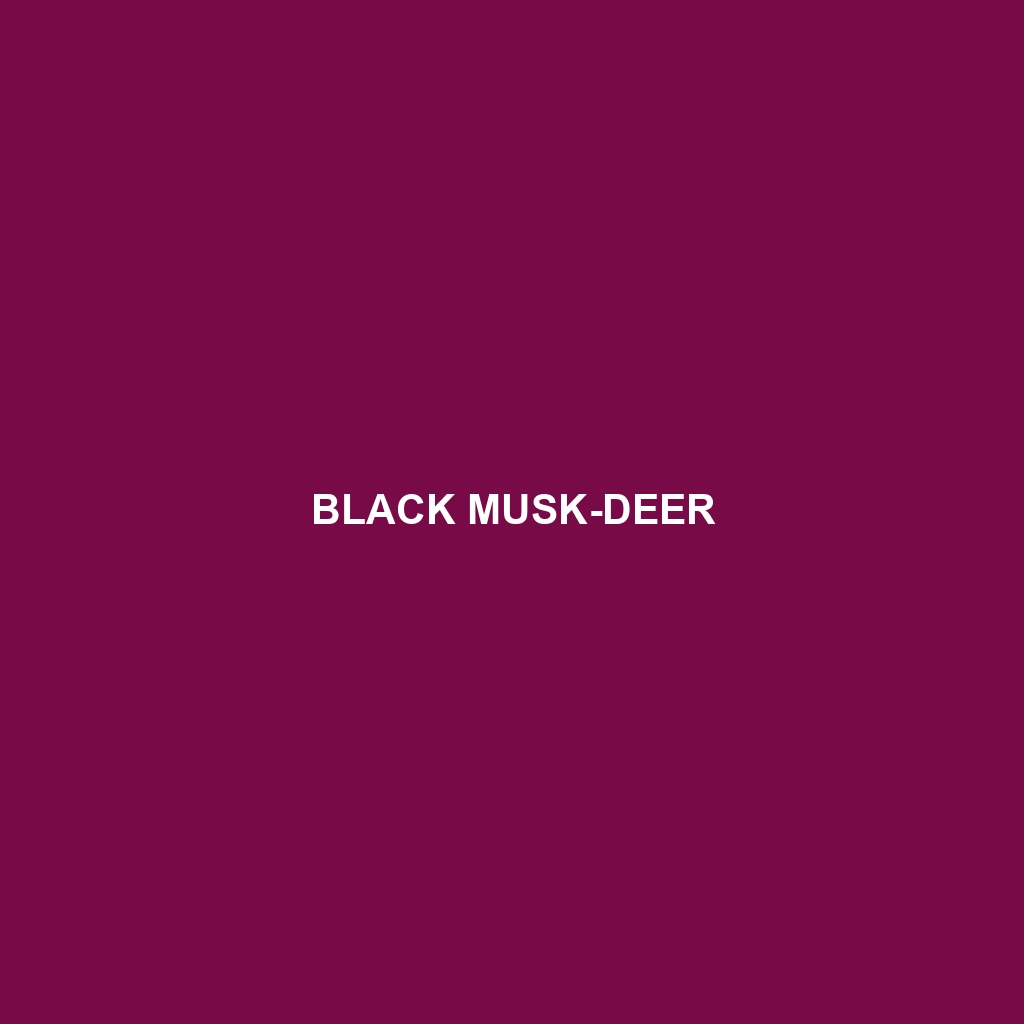Black Musk-deer (Moschus aterrimus)
Common Name: Black Musk-deer
Scientific Name: Moschus aterrimus
Habitat
The Black Musk-deer is primarily found in the dense, mountainous forests of Southeast Asia, particularly in countries such as China, India, and Nepal. These deer prefer moist, temperate climates and are often located at elevations ranging from 2,000 to 4,500 meters. The Black Musk-deer’s habitat encompasses a variety of environmental zones, including coniferous forests, broadleaf forests, and shrubland areas rich in undergrowth.
Physical Characteristics
Black Musk-deer are relatively small in size, typically weighing between 10 to 15 kg and standing about 50 to 70 cm at the shoulder. They exhibit a unique, robust body shape with long, slender legs and a distinctive long face. Their fur is primarily dark brown to black, providing excellent camouflage among the shadows of their forest habitat. Notably, males possess prominent tusks that can grow up to 10 cm long, which they use for defense against predators and during mating displays.
Behavior
Black Musk-deer are known for their elusive and solitary behavior. They are primarily nocturnal, being most active during twilight hours when they venture out to forage. Their natural agility allows them to navigate steep terrains skillfully. During mating seasons, males engage in vocalizations and scent marking to attract females, showcasing distinctive behaviors that aid in territory establishment and breeding.
Diet
The diet of the Black Musk-deer mainly consists of leaves, roots, fruits, and shrubs. They are herbivorous creatures, often browsing on a variety of plant species available in their forest environment. Their feeding habits include selective grazing, which allows them to thrive in their ecological niche and play a role in seed dispersal through their consumption of fruits.
Reproduction
Black Musk-deers have a breeding season that typically occurs in late summer to early autumn. After a gestation period of about 7 months, females give birth to a single fawn, which they conceal in dense vegetation for protection from predators. Maternity care includes nursing and teaching the young to graze on a variety of plant materials, crucial for their development and survival.
Conservation Status
The Black Musk-deer is currently listed as vulnerable on the IUCN Red List due to habitat loss and poaching driven by the demand for musk, a substance extracted from males for its fragrance. Conservation efforts are underway to protect their dwindling populations and preserve their natural habitats.
Interesting Facts
One fascinating aspect of the Black Musk-deer is its ability to produce musk, which is a coveted ingredient in traditional medicine and perfumery. Additionally, they are one of the few deer species that do not have antlers; instead, males have long tusks, making them unique among their relatives.
Role in Ecosystem
Black Musk-deers play a vital role in their ecosystem as herbivores, influencing plant community structures and contributing to seed dispersal throughout their habitat. Their activities promote biodiversity, making them an essential component of forest health and resilience.
